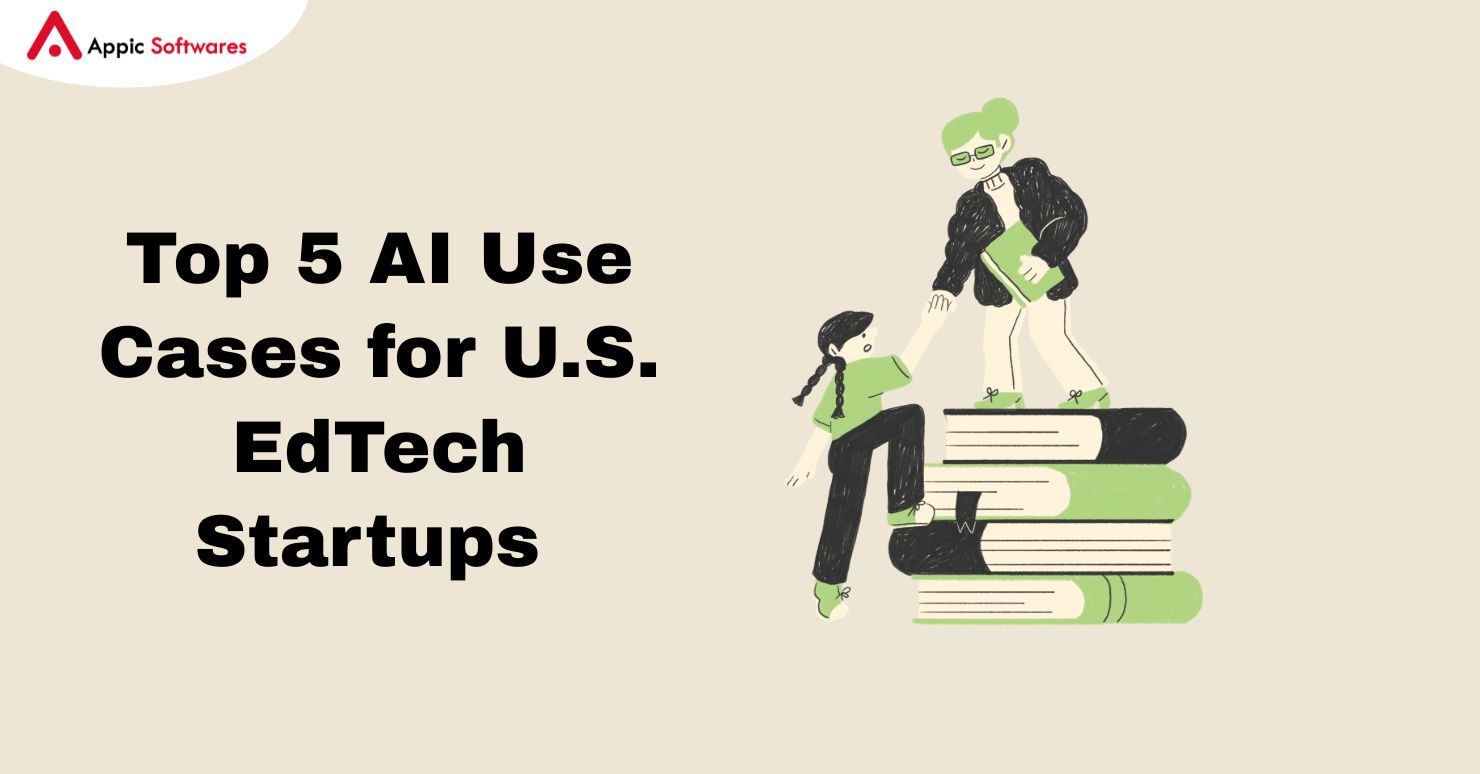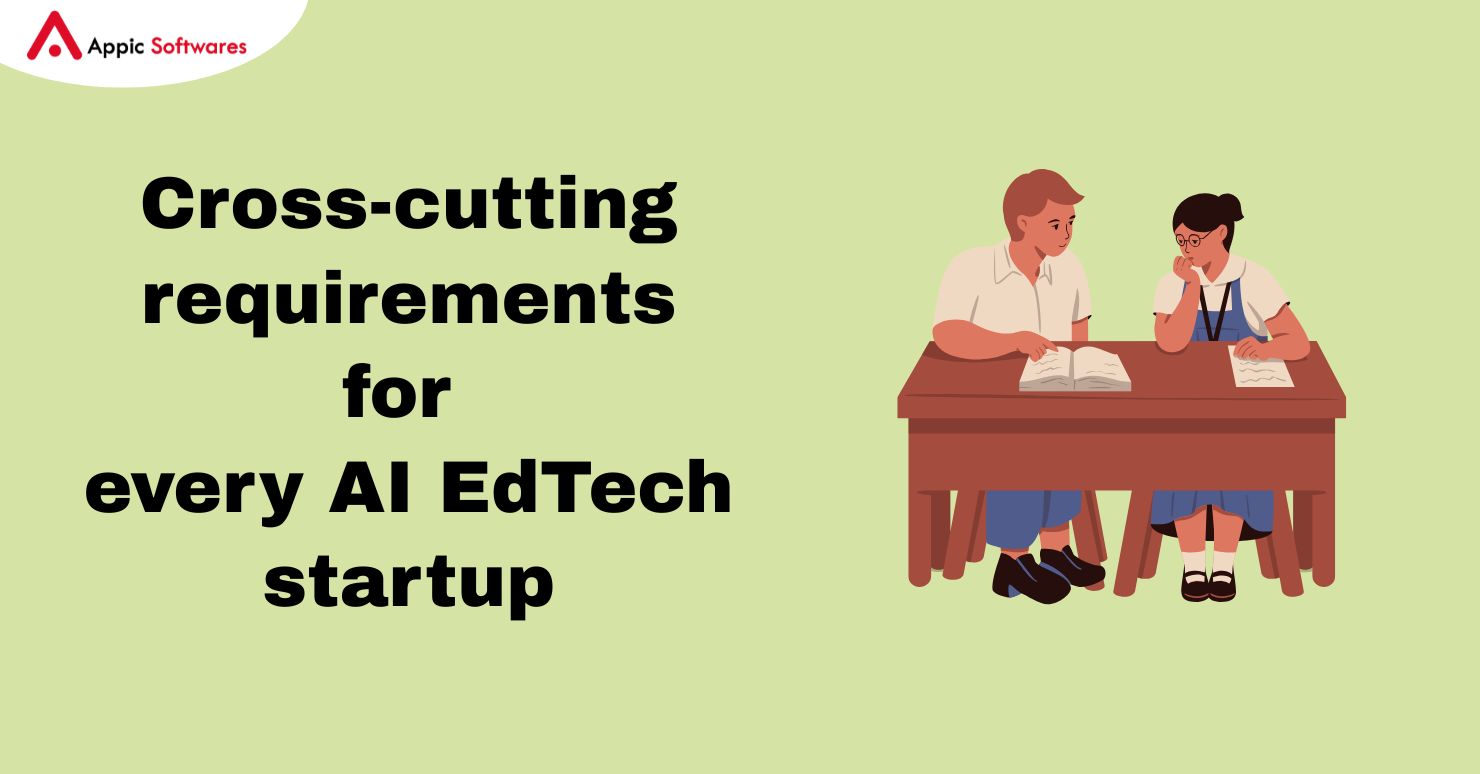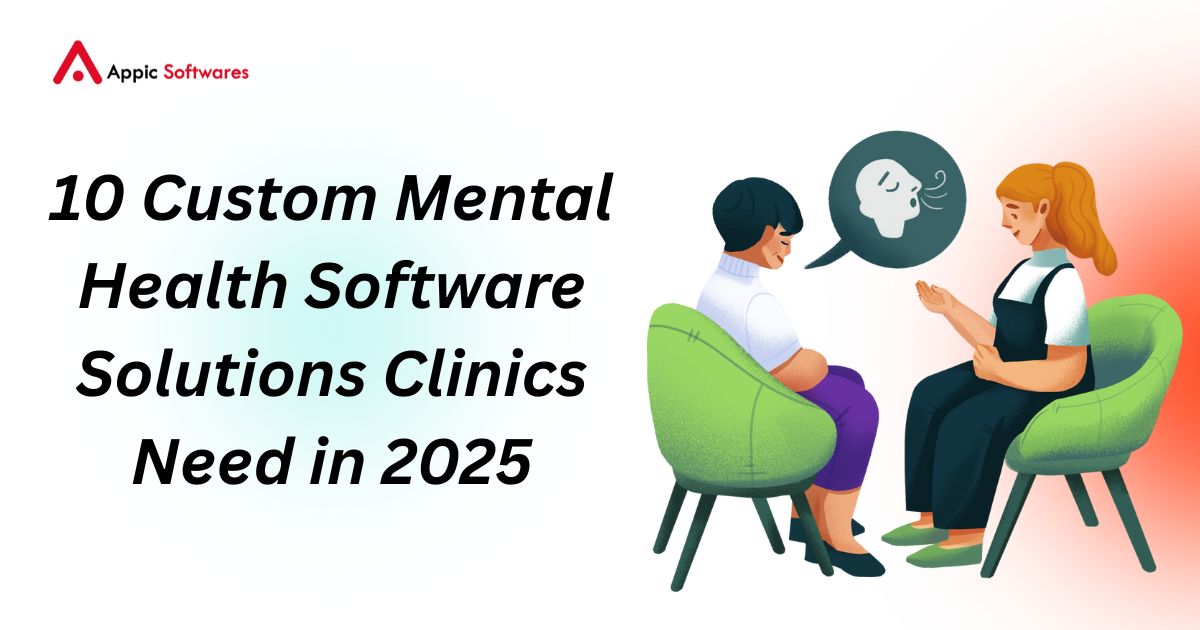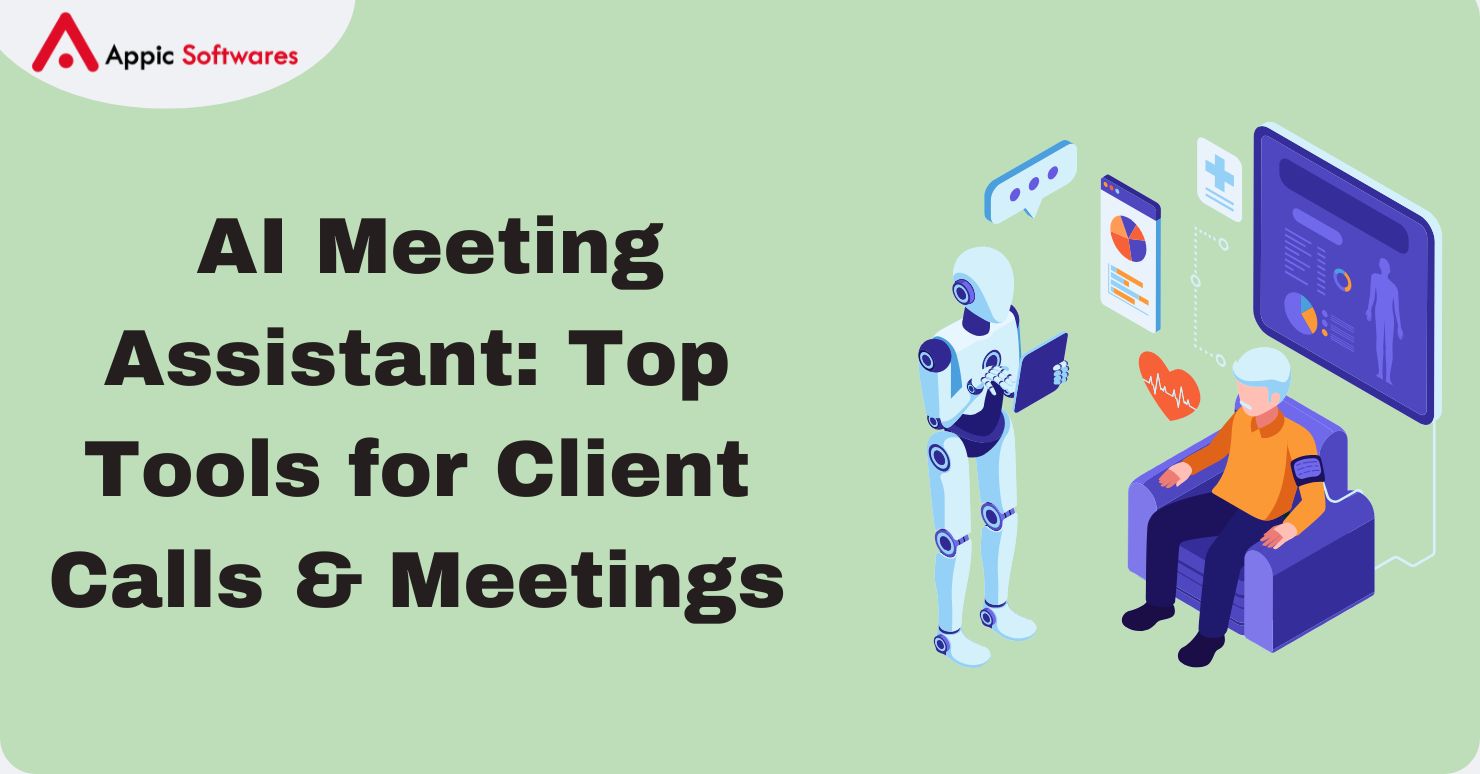
Artificial intelligence is reshaping learning in the United States. Startups now ship products faster. Districts expect measurable impact. Teachers want time back. Students want help that feels personal. This guide explains the five most promising AI use cases for U.S. EdTech startups in 2025. It is practical. It is research-aware. Businesses often hire Indian developers to build scalable EdTech platforms that integrate AI efficiently and stay focused on outcomes, privacy, and adoption. It also uses clear keywords so you can be found by the right readers.
Why 2025 is different for AI in education
Generative AI is no longer a lab demo. It sits inside learning platforms, learning management systems, and classroom tools. Federal policy has matured. The U.S. Department of Education has framed opportunities and risks. That guidance stresses human-in-the-loop design, transparency, validity, and accessibility. It asks vendors to reduce bias and measure learning effects, not just engagement. These principles shape the market in 2025. Similar to the future of blockchain in trading and finance, AI in education is guided by transparency, reduced bias, and measurable outcomes.
Teacher readiness has also shifted. By fall 2024, a nationally representative EdWeek Research Center survey found that 43 percent of teachers had received at least one AI training session. That is a big change from spring 2024. Training leads to experimentation. Experimentation leads to adoption when tools are simple and safe. Expect 2025 to accelerate that curve.
At the policy level, the federal executive branch has pushed for safe, secure, and trustworthy AI. The 2023 Executive Order and the 2024 OMB memo formalized governance and risk management. District technology leaders are watching. Startups that align to these norms gain procurement trust.
Use Case 1: AI tutors and study copilots that personalize learning
What it is
An AI tutor or study copilot sits beside the leaneIt adapts to skill and pace. It works across modalities. Text, audio, whiteboard, and short video can flow into the same session. This is the flagship AI in EdTech use case in 2025. Enterprises facing the same digital shift often rely on enterprise Drupal development to create robust platforms that support scalability and long-term use.
Why it matters
Personalization supports mastery. Students get just-in-time help. They feel seen. They get feedback in minutes, not days. Teachers can assign the copilot to extend class time. They can target skill gaps. The result is more practice with higher attention.
How to build it
Ground the copilot in standards and curriculum. Use retrieval-augmented generation to answer with your content, not generic web text. Add a Socratic mode that prompts students to think before revealing answers. Track learning objectives, not just chat turns. Provide teacher visibility into sessions. Make hints configurable by grade. Use content filters and refusal rules for banned topics. Log citations for every explanation.
Risks and safeguards
Do not overclaim learning gains. Validate the tutor with A/B tests on assignments. Calibrate reading levels. Support English learners with translation and vocabulary scaffolds. Provide transparency statements and accessible design. The Department of Education has urged human-centered, evidence-based AI, with clear reporting and bias mitigation. Follow that playbook from day one.
Go-to-market notes
Adoption grows when the copilot embeds in the LMS. Single sign-on is essential. District pilots should include teacher rubrics and short cycle studies. Offer offline-aware mobile for homework equity. Position it as instruction-aligned AI, not “generic chat.” The keyword focus here is personalized learning, AI tutor, and adaptive learning.
Use Case 2: Teacher workflow automation and planning copilots
What it is
Teachers lose hours to routine tasks. Lesson planning, rubric design, quiz writing, discussion prompts, formative checks, feedback drafts, and parent messages all take time. An AI copilot can draft materials in the teacher’s voice. It can align to standards and can vary reading levels and can translate family communications. It can summarize class insights.
Why it matters
Time is the hard constraint. Automation returns hours to instruction. It also improves consistency. Teachers reach more students with differentiated materials. Burnout drops. Morale improves when control stays with the teacher.
How to build it
Start with safe, opinionated templates. Let teachers paste learning goals and constraints. Generate artifacts that are editable, short, and standards-aligned. Include citations to source materials. Provide a planning calendar that sequences lessons across a unit. Add a reflection tool that turns student work into next-step suggestions. Keep a private content library for each teacher. Ensure the model never trains on teacher or student data without explicit consent.
Evidence and adoption signals
Teacher training on AI rose sharply across 2024. The EdWeek Research Center reports that more teachers now receive AI PD and bring AI into lessons. Products that fit PD pathways see faster uptake. Build training modules and micro-credentials that map to your product features. This is similar to how fintech firms overcome the challenges of using AI in fintech, where automation streamlines operations while maintaining compliance and trust.
Compliance notes
Districts will ask about student records and family rights. If your tool touches student work or grades, you are in FERPA scope. Have clear data maps and access controls. Be ready to sign a data privacy agreement. FERPA protects the privacy of education records. Vendors must follow district instructions and limit data use to educational purposes.
Bonus read: Kids education app like abcya
Use Case 3: Adaptive assessment and mastery tracking
What it is
AI can generate versioned items. It can tag skills and can estimate mastery with fewer questions and can adapt question difficulty in real time and can flag misconceptions with targeted distractors. It can author short feedback tied to skills.
Why it matters
Class time is precious. Adaptive assessment reduces testing minutes. It raises measurement precision. Teachers see skill-level gaps quickly. Students get quick feedback and targeted practice. Districts can track standards across terms.
How to build it
Use item banks with strong metadata. Train evaluators to review AI-generated items before release. Use psychometric checks to weed out biased or leaky items. Provide evidence statements for each question. Export scores to the gradebook with clear rubrics. Build a practice-to-proficiency loop that connects assessment to instruction. Replace long unit tests with frequent low-stakes checks.
Evidence and policy alignment
The federal AI guidance emphasizes validity, reliability, explainability, and bias reduction. That aligns perfectly with assessment. Document your validation procedures. Publish a short model card for your adaptive engine. Put humans in the review loop. The Department’s AI guidance calls for these safeguards and for measured claims about impacts.
Privacy and children’s data
If your users include children under 13, COPPA applies. The FTC requires verifiable parental consent or school authorization for educational use. The rule limits commercial reuse of children’s data. In 2023 and 2024, the FTC moved to tighten expectations around data retention, push notifications, and targeted ads to kids. EdTech startups should architect for minimal collection and purpose limitation.
Use Case 4: Early-warning and student-success analytics
What it is
AI can flag students who need help early. Signals include attendance, assignment completion, LMS clicks, assessment trends, and sentiment in reflections. The model predicts risk and suggests next actions. Counselors and teachers receive alerts. Families get supportive messages. Leaders see cohort-level patterns.
Why it matters
Intervening early changes outcomes. Small nudges prevent course failure. Timely tutoring avoids skill decay. Counselors can prioritize outreach. Schools can deploy limited resources more effectively.
How to build it
Start with transparent features and simple models. Logistic regression and gradient boosting are often enough. That matters because explainability drives trust. Share the top factors that drive each prediction. Offer confidence intervals. Allow teachers to correct or dismiss alerts. Feed these decisions back to improve the model. Keep a clear audit trail.
Ethics and equity
Bias is the central risk. Avoid proxies for race, disability, or economic status. Test for disparate impact. Build an override workflow. Pair every alert with supportive next steps, not penalties. Include a “do no harm” rule that hides alerts in contexts where labeling could stigmatize a student.
Legal frame
If the system touches education records, FERPA governs access and disclosure. Document your legitimate educational interest basis with the district. Provide parent access and correction pathways when required. The U.S. Department of Education’s privacy office offers detailed FERPA resources for districts and vendors. Align with those resources from the start.
Why districts will buy
District leaders are now comfortable with AI governance language. The Executive Order and OMB memo made risk management and inventories common practice across agencies. K-12 leaders borrow those patterns. Come prepared with an AI risk register, use-case inventory, impact metrics, and a post-pilot review plan.
Use Case 5: AI for accessibility, UDL, and language support
What it is
AI improves access. It can generate alt text and audio descriptions. It can provide real-time captioning and transcription and can simplify reading levels while preserving meaning and can translate into the family’s home language. AI can offer dyslexia-aware formatting and can summarize long texts into scaffolded notes.
Why it matters
Accessibility is not optional. It is central to equity. Universal Design for Learning asks for multiple means of engagement, representation, and action. AI can scale those supports. Students with disabilities benefit. So do English learners. So do students who miss class.
How to build it
Focus on quality and control. Let educators choose the level of simplification. Keep original text linked. Provide bilingual glossaries. Support speech synthesis with adjustable rates. Add keyboard navigation and screen-reader testing. Store accessibility preferences per user. Do not train models on disability-related data. Keep sensitive data out of prompts.
Compliance and trust
Follow federal accessibility standards and your district’s digital accessibility policy. Document your model’s error cases. Provide a feedback button directly in the UI. Align with federal AI guidance that emphasizes transparency, inclusion, and accessibility for learners with disabilities. This alignment builds trust with special education teams and families.
Cross-cutting requirements for every AI EdTech startup

Data privacy and security, simplified
You will face three recurring questions. What data do you collect. How do you use it. How long do you keep it. For K-12 users under 13, COPPA applies. The FTC enforces the rule and provides compliance guidance. It requires verifiable consent and limits commercial use. For student education records in K-12 and higher education, FERPA applies. It grants families rights and limits disclosure. Map your data flows. Publish retention schedules. Offer data deletion on request. Build an admin console that exposes settings by school. These practices match regulator expectations and district norms in 2025.
Safe, secure, and trustworthy AI, in practice
Policies matter in sales cycles. The federal Executive Order outlines principles for safe and trustworthy AI. The OMB memo translates those principles into governance and risk practices for agencies. District CIOs echo the same expectations. Create an AI use-case inventory. Document testing, monitoring, and incident response. Publish model cards and data sheets for your key models. Provide an accessible “How this AI works” page in plain English. These steps shorten procurement.
Evidence of impact
District buyers want learning outcomes, not just engagement charts. Pick clear, local outcome metrics. Reading minutes completed. Words written. Concept mastery rates. On-time assignment rates. Run small randomized or quasi-experimental pilots. Publish short reports. Reference U.S. Department of Education guidance about measuring benefit and risk. That language resonates in 2025.
Every EdTech startup needs strong digital foundations. Choosing the right website designing frameworks ensures smooth user experiences and accessibility. At the same time, many companies prefer web development outsourcing to accelerate product delivery while reducing costs—something EdTech startups can also benefit from.
How to choose your 2025 AI use case
Follow the friction and the budget
Pick the pain you can solve today. Teacher time and student practice are constant needs. AI tutors and planning copilots meet both. They also map to professional development. Teacher training on AI grew through 2024. That change boosts your chance of classroom use in 2025. Build training that mirrors your features. Offer certifications. Partner with districts that are already investing in AI PD.
Design for classrooms first, procurement second
Classroom delight drives district deals. But procurement closes the year. Ship classroom-ready UX. Then prepare the packets. Provide your data-privacy agreement. Provide a short security whitepaper. These artifacts reflect the norms set by federal AI governance and long-standing student privacy law. They help reviewers say yes.
Adopt human-in-the-loop by default
AI is a draft. People decide. Keep a person in every critical loop. Teachers approve feedback before release at scale. Counselors triage early-warning alerts. Students can request a human check on any explanation. This aligns with the Department of Education’s AI guidance. It also prevents overreliance on automated suggestions.
Deep dives by use case
Building the AI tutor that districts trust
Start with scope. Pick one grade band and one subject. Use your best proprietary content. Bind generation to that content with retrieval. Add step-by-step reasoning that can be revealed or hidden. Provide teacher dashboards that show question trails and time-on-task. Let teachers assign tutor sessions as warm-ups or exit tickets. Enable English learner supports at the click of a toggle. Provide parent-view summaries with links to resources. Document safety rules and refusal behaviors. Include a log of the tutor’s sources. Share your evaluation plan. Tie it to standards and subskills. Keep claims modest and measured.
Shipping the teacher copilot that saves real time
Interview teachers across contexts. Focus on three workflows first. Lesson outlines tied to standards. Differentiated practice sets at multiple reading levels. Family messages in home languages. Each feature should open to a single text box for goals and constraints. The output should be short and editable. Show standards tags on every artifact. Let teachers paste existing materials to adapt. Provide an ethics and privacy page written for teachers. Make opt-out easy. Do not train on their materials without explicit opt-in consent. Add a PD course that takes under one hour and ends with an assignment teachers can use tomorrow.
Delivering adaptive assessment with integrity
Your item pipeline needs humans. Build two stages. First, AI drafts items with rationale, tags, and distractor logic. Second, trained reviewers accept, edit, or reject the items. Track reviewer agreement. Keep stats on item difficulty, discrimination, and bias. Rotate items to reduce leakage. Offer a “why this answer is right” explanation for every item. That blends assessment and instruction. Provide teachers with skill maps and targeted practice aligned to results. Offer accommodations such as read-aloud and extra time. Publish a short technical brief on validity and reliability. Map your practices to federal AI guidance on evidence and transparency.
Operating early-warning systems with care
Start with consent and communication. Explain the system to families and students. Use plain language. Show them how data is protected. Limit signals to what is educationally necessary. Weigh recency heavily so a bad week does not define a student. Pair alerts with suggested actions, not labels. Track intervention outcomes. Retrain models with fairness checks. Provide administrators with aggregate dashboards that highlight support gaps, not just risk. Stay inside FERPA boundaries for access and disclosure. Publish your data retention limits and deletion processes.
Scaling accessibility supports across content
Run accessibility checks on all generated outputs. Ensure alt text is meaningful, not generic. Let teachers adjust reading level and tone. Provide side-by-side original and simplified text. For translations, expose key vocabulary and false friends. For captions, allow quick edits and speaker labels. Do not store disability indicators in prompts. Keep preferences at the account level with clear controls. Align your approach with the accessibility and inclusion themes emphasized in federal AI guidance. That earns trust with special education teams.
Marketing and SEO notes for EdTech AI in 2025
Your buyers search for solutions using specific phrases. Use keywords like AI in EdTech, AI tutor, teacher AI copilot, adaptive learning, learning analytics, early-warning system, AI accessibility, FERPA compliance, COPPA compliance, responsible AI, and trustworthy AI. Place these terms in headings and body text. Write short sentences. Explain outcomes first. Show evidence next. Close with privacy and safety. That structure maps to how U.S. districts evaluate vendors in 2025.
Final checklist for startup leaders
Confirm your legal posture. If you collect data from children under 13, follow COPPA and the FTC’s guidance. If you access student records, follow FERPA and district agreements. Keep data minimal and purpose-bound. Publish retention limits. Be deletion-ready. The FTC has highlighted stricter expectations on children’s privacy, including retention and push-notification limits and constraints on targeted ads to kids. Plan for these expectations now.
Align to federal AI principles. The Executive Order and OMB guidance set a lake-bed for risk management, transparency, testing, and inventories. Districts will mirror that posture. Prepare your AI use-case inventory, risk assessments, and incident processes. Make them easy to share during procurement.
Anchor your roadmap to what improves learning and saves time. AI tutors and teacher copilots generate immediate classroom value. Adaptive assessment turns feedback loops faster. Early-warning systems bring support sooner. AI accessibility tools widen participation. Each use case can stand alone. Together they create an intelligent learning ecosystem that is safer, fairer, and more effective.
Conclusion
AI in education is moving from novelty to necessity. In 2025, U.S. EdTech startups win by solving real problems with responsible AI. Build an AI tutor that is curriculum-aware and human-guided. Ship a teacher copilot that returns hours each week. Deliver adaptive assessment that is valid and fair. Run early-warning analytics that inform support, not stigma. Make accessibility and language support the default. Back it all with clear privacy practices and transparent model behavior. Follow federal guidance and district norms. Show evidence of impact. Use the right keywords so your audience finds you.
Want to explore AI use cases for your EdTech business? Get in touch with Appic Softwares and start building smarter apps!
FAQs
1. What are U.S. EdTech startups doing with AI in 2025?
In 2025, U.S. EdTech businesses employ AI to provide tailored learning tutors, automate teaching workflows, create adaptive exams, provide early-warning analytics, and make learning more accessible. These apps help students do better, give teachers more time, and make learning available to everyone. Many startups also use expert partners to support their platforms with custom solutions, such as those offering education app development, to ensure scalable, interactive experiences.
2. What are the biggest privacy issues with AI in EdTech?
The main worries are about the safety and privacy of student data. Startups have to follow FERPA and COPPA rules on how they acquire, utilize, and share student data. Responsible use of AI also needs openness, checks for bias, and rigorous rules about how long data can be kept.
3. What makes AI important for education in 2025?
AI helps with the problems of not having enough teachers, students not learning enough, and the growing workload of administrators. It helps kids in a way that is unique to them, cuts down on instructors’ busy work, and makes sure that all students can get a good education. In short, AI makes learning better, faster, and fairer.








